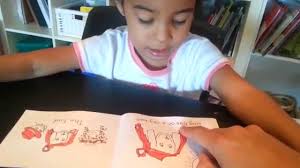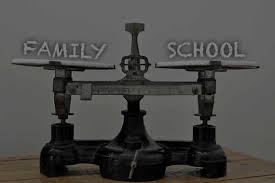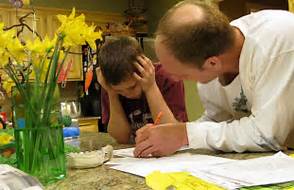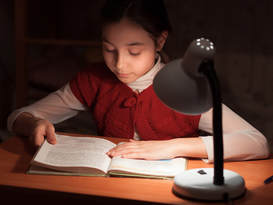|
Parents often are conflicted. They want family time or at least time to run the kids to soccer, gymnastics, swim team, etc. and they want their children to benefit from homework. So, just how much time should be spent in academics during a day? The amount of schooling and homework combined varies by type of instruction, and even then, by school district and sometimes by school within a district. If you turn to the homeschooling crowd, the amount of time per subject per child decreases dramatically as a total but the amount of individual time increases. So, let’s examine each one. Homeschooling And Time For Academics  Homeschool offers the most flexibility of scheduled time. Some states require a certain minimal amount of time to be spent on school activities as they regulate homeschooling. Other states have no minimum standard. Many choose a curriculum that can be accomplished on average at a rate of about 30 minutes per subject. Thus, the length of the day depends upon the different subjects expected to be covered, the ability of the child to accomplish tasks, and what other things in the day might be scheduled in. The extreme flexibility allows for additional activities like music lessons and sports teams to be readily scheduled in as part of the formal curriculum. Many homeschoolers finish a day’s worth of educational activities in a morning to allow doing those additional activities in the afternoon. Some allow children to “nibble” away at school work all day. For the person who worries about the trade-off between school time and other family activities, and who feels competent enough to teach their child directly through homeschooling. A homeschooling choice produces a dynamic that swings towards emphasizing home life and other activities with less emphasis on academics. Public School and Time on Academics  When choosing to send your child to a public school, you are choosing to enroll your child in a standardized program. Many districts require that all classrooms teaching a specific topic be on the same page and activity no matter who the students are. Thus, brighter students are held back and slower students are rushed along with the result often being boredom on the part of the former students and withdrawal and abandonment of effort on the part of the latter. Most school days are 7 hours long with a half hour lunch leaving 6.5 hours for curriculum. Many times, any recess is a part of the half hour lunch time. Homework often increases the older the child gets and the more honors or advanced placement courses that a student is taking. For example, a study by Stanford’s College of Education found that many school districts expect 20 minutes of home a night plus an additional half hour of being read to or 50 minutes of academic work each night for four nights a week (Barrientos, 2010)  Some schools require less and a national survey found that often 43 minutes a night for four nights was assigned in elementary classrooms while up to 53 minutes a night was assigned for a regular high school work load (UOPX, 2014). That time increases to recommended levels of 2 hours of homework a week for each class that an honors student takes in high school (Barrientos, 2010). Most high school programs require 5 to 7 different classes per day. This means that 10 to 12 hours a week of homework (Barrientos, 2010) or up to 17.5 (UOPX, 2014) hours a week of homework are required. If that is done during 4 nights a week, that is 2 hours per night to 4.5 hours a night. High school students begin to lose the benefit of doing homework when the homework workload reaches 3.5 hours per night (Barrientos, 2010)! Unfortunately, the more recent trends indicate that even elementary school students may be reaching that burn out level. So, students are spending between 8.5 and 11.5 hours a day doing academic work when in the public school. This averages to 10 hours a day in academic curriculum (with little to none of it engaged in physical activity). This does not leave much time for family time, other activities, or even eating and sleeping and transport time. The higher number seems the norm if they are in a gifted and talented program in elementary school or in an honors/AP program in high school (Barrientos, 2010). This results in an unbalanced dynamic in the opposite direction from homeschooling. The net result is there is often little time for family and other activities beyond meeting the required curriculum. Private School and Academics  In terms of customization, private schools fall somewhere between homeschooling and public schools. Many private schools, like The Renaissance Preparatory Academy (RPA), customize the learning experiences if not to the individual child, then, at least to a small group of children. There is great variation on the assignment of homework in the private school setting. Because the Renaissance Preparatory Academy has an explicit policy, we will use the standards of RPA. RPA has a longer school day. It lasts from 8 am to 4 pm. Within that 8 hours is an hour of PE/recess and a half hour lunch. PE (structured physical activity) and recess (unstructured time including physical activities) are both explicit parts of our curriculum so the time available for curriculum is 7.5 hours. Our homework philosophy is that it is assigned only if there is a purpose for it such as the student needs the additional time to complete work to meet a jointly chosen deadline. Often children can accomplish all of their work to meet their term goals within a school day. We do have regular reading homework that needs to be done: students must read five of seven nights and the required time ranges from 5 minutes to 30 minutes at a setting. Typically, then our academic day is a total of 7 hours thirty-five minutes to 8 hours long. The academic learning results, though, from earlier testing of students using our curriculum are children with skill sets 1 to 2 grades above their assigned grade. We include active movement in our curriculum so that students are not always stationary. Because our reading assignment can be accomplished at the family’s discretion, we have a fairly balanced dynamic that requires about 1/3 of the day for academic work, just over 1/3 of a day for personal necessities (1/3+), and the remaining slightly less than 1/3 of a day for home life and other activities. Thus, our dynamic at the Renaissance Preparatory Academy is a more balanced one. It is your family and your choice. We believe that even though we have a longer school day, we actually have a more effective and efficient day and have an overall balanced approach to family time and school time. We invite you to join us and check it out for a year. We think that you’ll like our dynamic as well! Remember, too, that our goal is to enable your child to do challenging things well! We promise to adjust the level of difficulty until your child is at that sweet spot and can learn that had work pays off and allows for more free time at home when the school day is done!
Give us a call at 843-800-0590 or drop us a note in our contact box. We'd love to visit with you about the school and how it would impact your lives! Janice Black, Founder and Chair of the School Board
1 Comment
12/15/2022 05:40:19 am
Thanks for sharing the article, and more importantly, your personal experience of mindfully using our emotions as data about our inner state and knowing when it’s better to de-escalate by taking a time out are great tools. Appreciate you reading and sharing your story since I can certainly relate and I think others can to
Reply
Leave a Reply. |
Founder's Blog by
|
|
We are an independent non-profit private school in the Myrtle Beach area that operates with rigorous academic standards, a commitment to developing all aspects of a child, an orientation that is respectful of religious organizations, and has a strong honor code.
A Project of the Social Good Fund | www.socialgoodfund.org
|
Proudly powered by Weebly
|



 RSS Feed
RSS Feed
